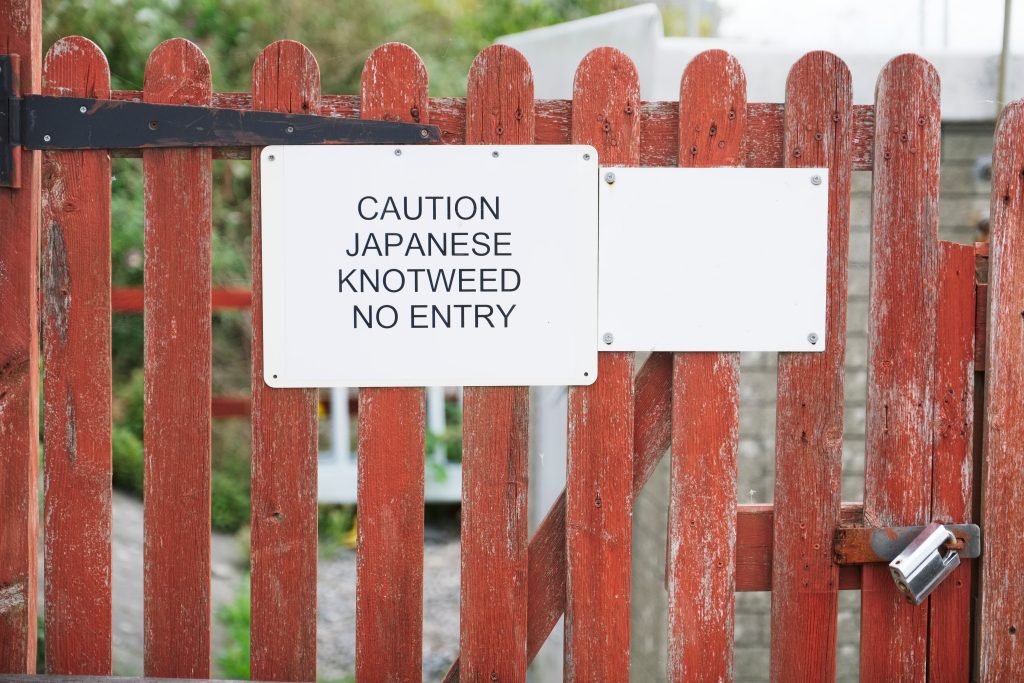Isn’t it ironic that Japanese Knotweed, introduced for its ornamental beauty, now poses a dire threat to our local ecosystems? You’ve probably seen its lush green foliage without realizing its capacity to suffocate native plants, destabilize riverbanks, and disrupt animal habitats.
This invasive plant marries landscapes, undermines the soil, and threatens biodiversity. Understanding its impact and the techniques for its removal is vital.
If you’re wondering how deep the rabbit hole goes regarding its ecological and economic consequences, you’ll want to know why strenuous eradication efforts are beneficial and essential.
Ecological Threats Posed
Japanese Knotweed poses substantial ecological threats by aggressively outcompeting native plants and disrupting local biodiversity. You’re likely familiar with how vibrant, local ecosystems support various life forms.
When Knotweed invades, it monopolizes resources like sunlight, nutrients, and water, leaving little for native species. This invasion leads to a diminished habitat diversity. Studies show that the variety and number of insects, birds, and other wildlife decrease significantly in areas dominated by Knotweed.
Its dense growth also affects soil composition and riverbank stability, increasing erosion and sedimentation in waterways. Understanding these impacts helps us understand why you’re integral to community efforts to control and eradicate this invasive species.
Together, we can restore our natural habitats.
Economic Impacts
Beyond the ecological damage, Japanese Knotweed also inflicts significant economic losses on property owners and local governments. The invasive species can undermine building foundations, damage roads, and invade waterways, often requiring costly repairs.
For homeowners, knotweed can drastically reduce property values, sometimes by up to 20%, as the plant is seen as a liability. Dealing with an infestation isn’t only expensive and time-consuming, involving professional removal services that can run into thousands of dollars.
Local governments spend millions annually on control and mitigation efforts. It’s clear, you’re not alone in this struggle. Addressing this issue can prevent further financial strain and foster a community spirit dedicated to protecting local economies and environments.
Legal Implications
Understanding the regulatory compliance requirements is vital for anyone involved in managing or eradicating Japanese Knotweed, as failure to adhere can result in significant legal consequences.
In many regions, specific laws mandate how to dispose of this invasive species to prevent further spread. For example, in the UK, it’s classified as controlled waste under the Environmental Protection Act 1990, requiring you to dispose of it at licensed landfill sites.
Ignoring these regulations not only harms the environment but also exposes you to fines. It’s essential you’re aware of and comply with these laws, not just for legal integrity but also to foster a sense of responsibility and community in tackling this ecological challenge together.
Property Value Impact
How does Japanese Knotweed affect property values and what’re the legal implications for homeowners?
When you’re looking to sell or mortgage your property, the presence of Japanese Knotweed can greatly reduce its value. This invasive species is known for damaging building foundations, drainage systems, and walls, leading to costly repairs.
Litigation Risks Analysis
Beyond the immediate impacts on property value, Japanese Knotweed also exposes homeowners to significant legal risks if not properly managed. If this invasive species spreads from one property to another, you could find yourself entangled in litigation.
Under several regional laws, homeowners are obliged to control and prevent the spread of this plant. Failure to do so can lead to lawsuits for environmental damage or loss of property value, potentially resulting in hefty fines or remediation costs.
Removal Techniques
Effective removal techniques for Japanese knotweed hinge on combining mechanical, chemical, and biological methods to curb its rapid spread and ecological damage.
You’ll find that mechanical methods, such as digging out the rhizomes, are labor-intensive but essential for immediate results.
Chemical treatments, involving glyphosate-based herbicides, are applied directly to foliage or injected into stems, ensuring the plant’s systemic absorption and gradual eradication.
Biological control, a newer approach, involves introducing natural predators, like the Psyllid insect, from knotweed’s native habitat, offering a sustainable, albeit slow, reduction in knotweed proliferation.
Combining these methods increases overall efficacy, aligning with your community’s collective efforts to restore native ecosystems and protect local biodiversity.
You’re not just removing a weed; you’re reclaiming your natural heritage.
Challenges in Eradication
Despite these varied approaches, completely eradicating Japanese knotweed from affected areas will be challenging. This plant’s resilience is rooted in its extensive rhizome system, which can spread widely underground and remain dormant yet viable for years. Even a small fragment of these rhizomes can regenerate into a new plant, making thorough removal challenging.
You’re also dealing with the plant’s rapid growth rate, which can see it sprout up to 10 cm a day during the growing season, quickly taking over any cleared space. Additionally, knotweed disposal is legally regulated, requiring you to transport and dispose of the plant material at licensed facilities. This adds a layer of complexity and cost to the eradication efforts, underscoring the need for a committed, community-wide approach.
Long-Term Management Strategies
To manage Japanese knotweed effectively over the long term, you must implement a multifaceted strategy that includes regular monitoring, prompt response to regrowth, and community involvement. Studies show that consistent surveillance of affected areas can detect early signs of knotweed resurgence, essential for controlling its spread.
You’re not alone in this fight; engaging local community groups in eradication efforts fosters a collective responsibility and enhances the effectiveness of these initiatives. Additionally, integrating biological control methods, such as introducing natural predators from its native habitat, has been proven to suppress knotweed populations sustainably. This sustainable method is part of the services offered by a trusted Manchester knotweed removal company, ensuring long-term relief from this invasive species.
Conclusion
As you confront the reality of Japanese Knotweed, it’s essential to recognize that its removal isn’t just beneficial; it’s a necessity for ecological balance. Effective eradication and management strategies are pivotal.
By addressing this invasive species, you’re not only protecting local ecosystems but also preventing substantial economic and legal repercussions.
The effort you invest in combating Japanese Knotweed today safeguards the biodiversity and ecological health of your community for future generations.


